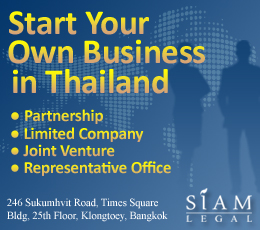The Trademark Act of B.E. 2534 (1991) provides that in order for a trademark to be registrable, it must be distinctive, not otherwise prohibited by the Act, and it must not be “identical or confusingly similar to another registered trademark.” Furthermore, Section 61(4) allows the right to petition the Trademark Board to cancel a trademark if one believes that a trademark registered by another person is too similar to one’s own. Specifically, it states that a petition for cancellation may be lodged if, at the time of registration, the offending trademark was “so similar to a trademark registered by another person that the public might be confused or misled as to the owner or origin of the goods for goods of the same class or of a different class with the same character.”
In Thai Supreme Court Decision No. 368/2512, issued on March 26, 1969 under the old Trademark Act of B.E. 2474 (1934), the plaintiff, National Periodical Publications, Inc. (the official name at that time of “DC Comics”) headquartered in New York, U.S.A., filed a petition pursuant to the old Trademark Act in order to cancel a trademark registered by Defendant and to prohibit Defendant from using the trademark with his products. The facts were that on August 18, 1960 Defendant filed a trademark application of an image of a man with a letter “S” affixed upon his chest about to take flight behind a large star in the middle of the image. The trademark application covered goods category 42, which at that time referred to food materials. Plaintiff, who had registered their trademark in Thailand since 1946, in goods category 39 (which at that time referred to stationery and printed materials), alleged that Defendant’s trademark would mislead the public into believing that Plaintiff produced or was associated with Defendant’s products. Furthermore, Plaintiff alleged that the “S” was well-known to the public to refer to “Superman”, which Defendant disputed, and that the differences between their trademarks were not enough to distinguish Defendant’s. The Court ruled in favor of Defendant on the following grounds:
- There was no way that the public could be confused or misled between the two images. Plaintiff’s trademark is of a caped man standing arms akimbo, while Defendant’s trademark is a man about to take flight behind a large star.
- The trademarks are used for two completely different categories of goods, to wit, printed materials and food ingredients.
- Images of a person in general, whether that person is a Superman or other type of extraordinary individual, have no specific distinguishing characteristics. Therefore, Plaintiff cannot be allowed to be the only one with the right to use such images.
Whether one trademark is an infringement of another is not always a clear-cut legal issue. Any business that wishes to register a trademark is advised to seek experienced legal counsel who can advise as to whether the trademark can be registered and any possible legal problems the applicant may face at a later time.



